You are using an out of date browser. It may not display this or other websites correctly.
You should upgrade or use an alternative browser.
You should upgrade or use an alternative browser.
High speed / Semi-High speed rail projects of Indian Railways
- Thread starter Ashwin
- Start date
The priority section is nearing completion. Aim is to get that strech active by year end.
Made in India wheels to run Indian Railways’ Vande Bharat trains; To be manufactured in Bengaluru
With its plan to import Vande Bharat train wheels from Ukraine impeded by the ongoing war, the Indian Railways has decided to manufacture them at its Bengaluru factory to ensure the prime minister’s pet project is rolled out on time, say sources.The first batch of 128 wheels, out of a cumulative order for 36,000 at a cost of USD 16 million, have been transported from Ukraine to its neighbouring Romania by road and are currently stuck there. These are expected to be airlifted to India by the third week of May, they said.
With the war halting manufacturing in Ukraine, the Railway Wheel Factory in Yelahanka in Bengaluru will now prioritise manufacturing these wheels for two Vande Bharat rakes. A rake of the swanky Vande Bharat Express comprises 16 coaches.
The Railway Wheel Factory (RWF) has issued tenders for parts required for these wheels and is expected to complete the production over the next two-three months, the sources said.
The factory has been manufacturing axles for these wheels, even the imported ones.
The decision will also help the railways to reduce its dependence on imports for train wheels. Currently, the national transporter imports 60-70 per cent of its required wheels.
The ongoing war has raised fear of a major shortage in the global market as Ukraine is one of the largest manufacturers of wheels worldwide. It gets 70 per cent of the orders from the European Union for wheels of freight railcars.
Officials said only about 20 factories worldwide manufacture these wheels.
As the war hampered the supply of wheels, the Ministry of Railways held a series of meetings with the Ministry of External Affairs and the Indian Embassy in Ukraine and decided to transport the first batch of 128 wheels to Romania by trucks.
The wheels will be brought to Chennai in batches between May 15 and May 20 and taken to the Integral Coach Factory (ICF) where the trainsets are being assembled.
The wheels are manufactured from a large solid piece of steel, which is heated in extreme temperatures and pressurised to take shape. This thermal cycle ensures that forged wheels are stronger than other types.
The railways is now trying to ensure that it has surplus wheels for not just the 75 trainsets that it has to assemble by August 15, 2023 but also for the next lot.
“The wheels will land from Romania in time for trials of the trains and the orders that we have subsequently given to two other companies abroad will also reach us by next month. So, we are most likely to have many trainsets ready by June-July this year. The aim is to have surplus supply so that we can move on to the next lot of trains,” said a senior official.
In the Union Budget for 2022-2023, Finance Minister Nirmala Sitharaman proposed that 400 new Vande Bharat trains be developed and manufactured over the next three years. The target is to roll out 75 such trains by August 15, 2023, according to a timeline announced by Prime Minister Narendra Modi.
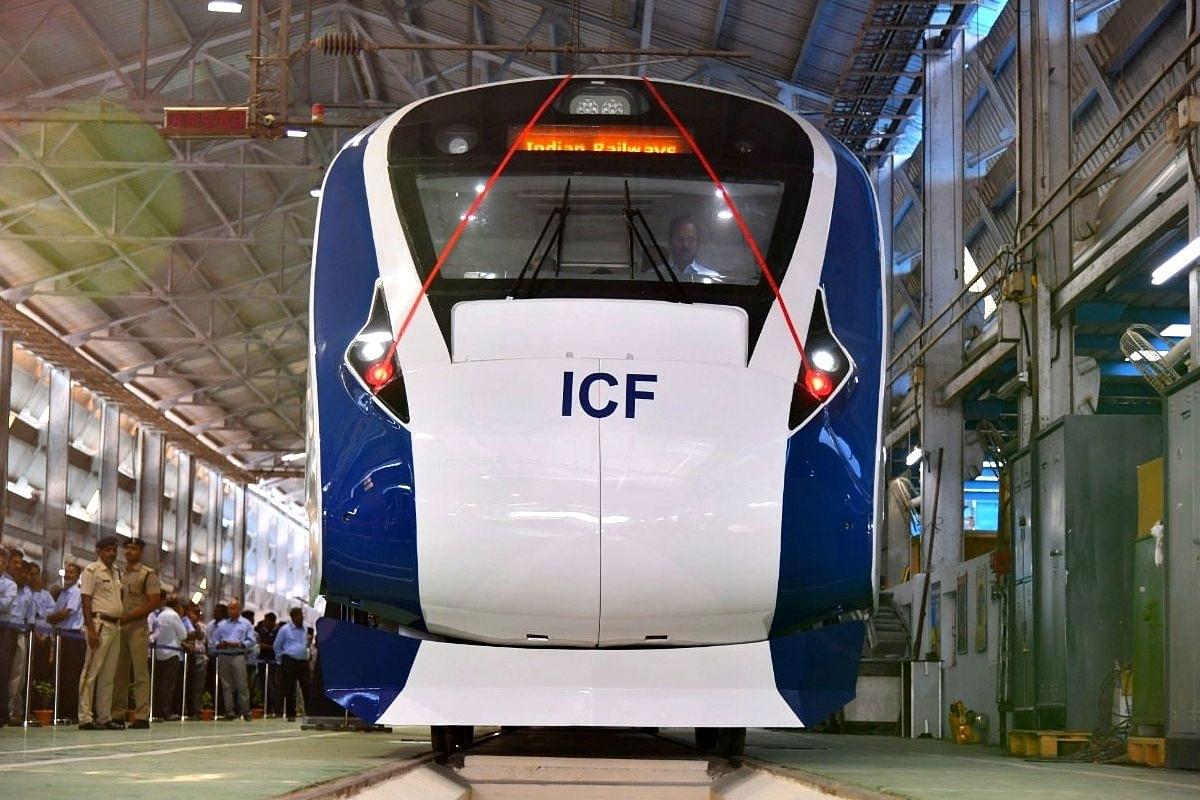
Indian Railways To Bring 'Vande Bharat' Semi High-Speed Freight Trains
Indian Railways is manufacturing semi high-speed freight trains which can run at 160 kmph against the present freight train's top speed of mere 75 kmph.
swarajyamag.com
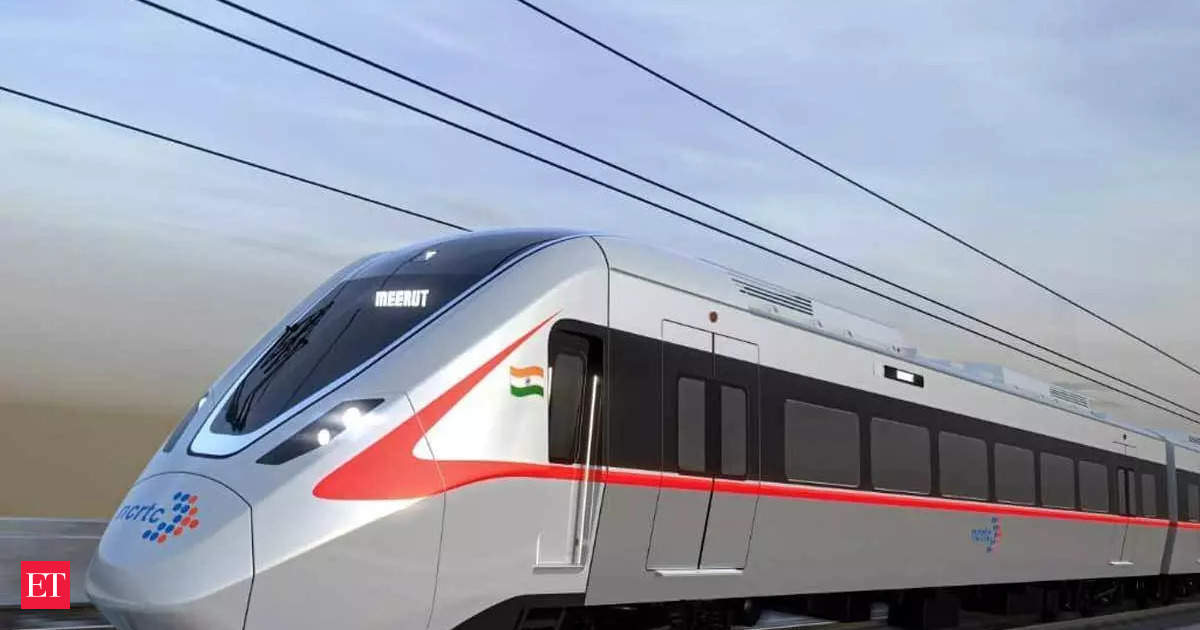
Preparations afoot at Duhai Depot for arrival of India's first RRTS train
"First RRTS will soon arrive at Duhai Depot in Ghaziabad. The depot is gearing up for its arrival as tracks have been laid out, and preparations are being made for the testing of the train there," the statement by NCRTC said.
Delhi-Meerut RRTS: India’s First Regional Rapid Transit System train set is ready, to be handed over on May 7
Delhi-Meerut RRTS: The very first trainset of India’s first Regional Rapid Transit System (RRTS) corridor is ready and it will be handed over to National Capital Region Transport Corporation on 7 May 2022. According to a statement issued by NCRTC, 100 per cent of these state-of-the-art RRTS trainsets are being manufactured in the country at the Alstom’s factory in Savli, Gujarat, under the ‘Make in India’ initiative. Once these trains are handed over to NCRTC by Alstom, the trainsets will be brought on the large trailers to the Duhai depot, which is being developed at Ghaziabad at a rapid pace for the upcoming Delhi-Ghaziabad-Meerut RRTS corridor. The Corporation said all facilities of operation and maintenance of these RRTS trainsets, at this depot, are nearing completion.On 16 March 2022, the interiors along with the commuter-centric features of the country’s first RRTS trains were unveiled at Ghaziabad’s Duhai Depot. NCRTC claimed that these RRTS trains will be the fastest trains in the country with a design speed of 180 km per hour, operational speed of 160 km per hour and an average speed of 100 km per hour. The modern trains of the RRTS project will have ergonomically designed 2X2 transverse cushioned seating, CCTV cameras, wide standing space, luggage racks, dynamic route maps, laptop and mobile charging facility, Heating Ventilation and Air Conditioning System (HVAC), auto control ambient lighting system as well as other amenities. The RRTS trains will be air-conditioned and will have Standard and Premium class (one coach per RRTS train) along with one coach reserved only for women passengers.
According to NCRTC, the manufacturing facility of RRTS trains at Savli will be delivering 210 cars for the first RRTS corridor. This includes RRTS trainsets for operating regional transit services on the Delhi-Meerut corridor as well as for local transit services in the city of Meerut. The construction of India’s first RRTS corridor is going in full swing. After the trains’ arrival, initial trial runs are likely to commence on the priority section by this year-end. The 17 km long Sahibabad-Duhai priority section is targeted to be commissioned by the year 2023 and the full corridor by the year 2025.
India's first semi-high speed freight train likely to run by December
India's first semi-high speed freight train is likely to hit the tracks by December, officials said Friday.Replicating the concept of Vande Bharat trains, the 16-coach 'Gati Shakti' train can clock 160 kmph and will be manufactured at the Integral Coach Factory (ICF) in Chennai.
In order to implement the PM Gati Shakti initiative in a focused manner, the Railways has created a separate directorate at the Railway Board with its branches at Khurda, Bilaspur, Delhi and Bengaluru divisions to expedite the ambitious scheme.
"The design work for these trains has already started. We have also given the order for materialBy December this year, we will be able to manufacture two of these trains," ICF General Manager A K Agarwal said, adding that an overall target of 25 such trains has been set.
The final number of trains will depend on how the initial ones are received by the market, he added.
The Railways is planning to target the e-commerce and courier parcel segment through these trains, officials said. Each train will also have refrigerated wagons in the rear end and in the front to carry perishables like milk products, fish, fruit and vegetables.
Electricity connection for these wagons will be provided from the coach. The rest of the coaches will have rollers for moving the container.
Each coach will have two wide doors for loading and unloading the containers.
According to the Indian Brand Equity Foundation, with a turnover of USD 50 billion in 2020, India has become the eighth largest market for e-commerce.
"India's e-commerce market is expected to reach USD 111 billion by 2024 and USD 200 billion by 2026 and expected to reach USD 350 billion by 2030," the official said, adding that Indian Railways plans to capture the small size parcel shipments by running dedicated high speed freight trains.
The Indian Railways is aiming to increase its share in freight transportation from the present 27 per cent to 45 per cent by 2030 through better infrastructure and business development plans, according to the National Rail Plan.
The Indian Railways has identified 74 new 'Gati-Shakti Multi-Modal Cargo Terminal (GCT) locations across the country, with 20 of them in the South Indian states under Prime Minister Narendra Modi's ambitious 'Gati-Shakti Multi Model Cargo Terminal' policy.
The policy was launched in 2021 in order to boost investment in the development of additional terminals for handling rail cargos.
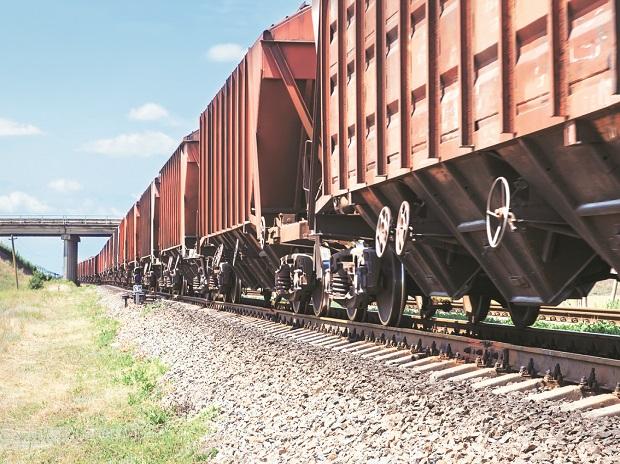
India's first semi-high speed freight train likely to run by December
Replicating the concept of Vande Bharat trains, the 16-coach 'Gati Shakti' train can clock 160 kmph and will be manufactured at the Integral Coach Factory (ICF) in Chennai.
Shri Ashwini Vaishnaw co-chaired the 14th Joint Committee Meeting on Mumbai-Ahmedabad High Speed Rail Project
Dr. MORI Masafumi, Special Adviser to Prime Minister of Japan co-chaired the meeting from Japanese side
In the meeting, Minister of Railways emphasises for early completion of the project
Shri Ashwini Vaishnaw, Minister of Railways, Communications and Electronics & Information Technology co-chaired the 14th Joint Committee Meeting from Indian Side to discuss and decide on all important issues related to execution of Mumbai-Ahmedabad High Speed Rail (MAHSR) Project today. Dr. MORI Masafumi, Special Adviser to Prime Minister of Japan co-chaired the meeting from Japanese side. 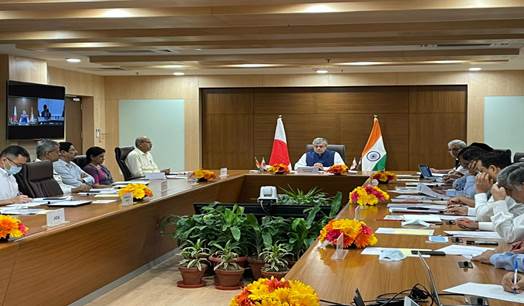
During the meeting, presentation and video film were shown regarding the progress of the project. Further, issues related to funding, contracts and execution were discussed for mutual resolution and targeted commissioning of the project.
Joint Committee meeting between Government of India and Government of Japan is the highest consultative body for taking ahead projects of mutual interests and benefits. Japanese Government is committed to fund the MAHSR projects with a soft loan and technical and financial cooperation.
The meeting was fruitful and productive and finalized strategic issues for early completion of the project. Both sides agreed to work to Hon’ble PM’s view of One Project- One team in the overall interest of the project.

Shri Ashwini Vaishnaw co-chaired the 14th Joint Committee Meeting on Mumbai-Ahmedabad High Speed Rail Project
Shri Ashwini Vaishnaw, Minister of Railways, Communications and Electronics & Information Technology
pib.gov.in
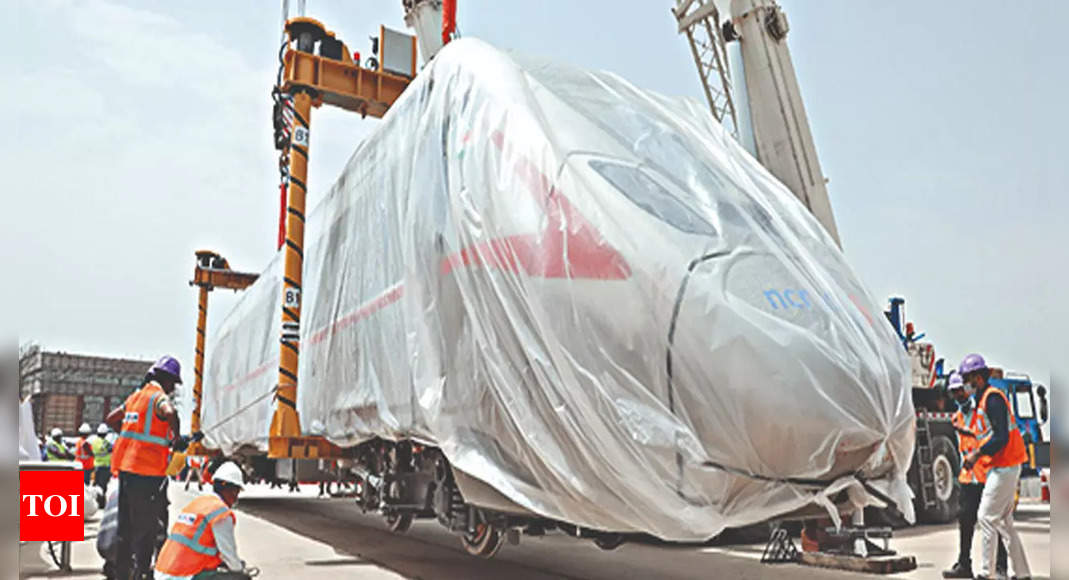
Delhi-meerut Rrts: Installation Of Latest European Train Control System Level 3 Signal Begins | Meerut News - Times of India
The installation of signalling equipment for the operation of the Regional Rapid Transit System trains has begun in the priority section of the count
Aluminium-Bodied, Speed of 200 Km/Hour: Govt Invites Tenders for 4th-Gen 200 Vande Bharat Trains
These will be sleeper trains.
These will be sleeper trains.
